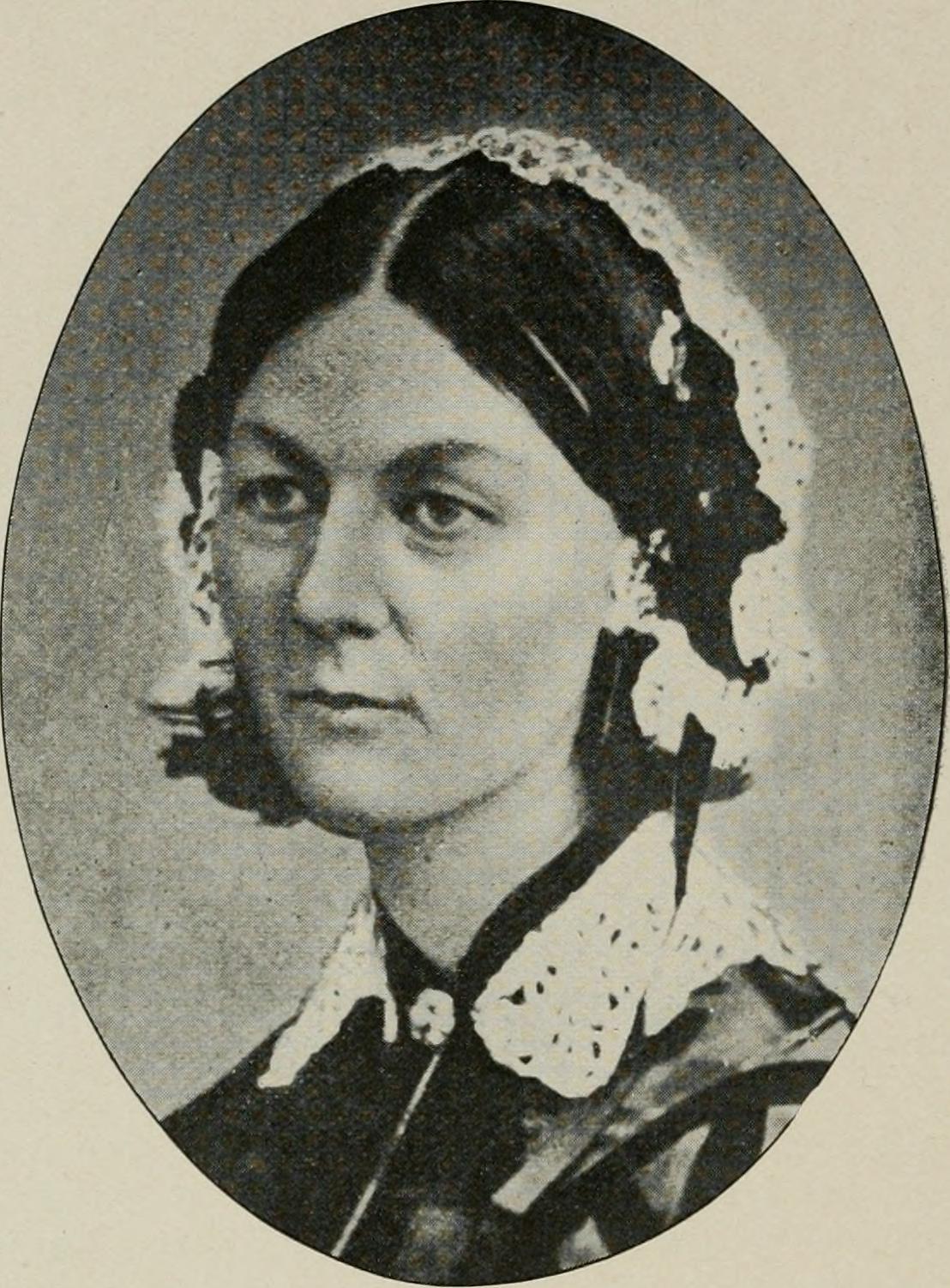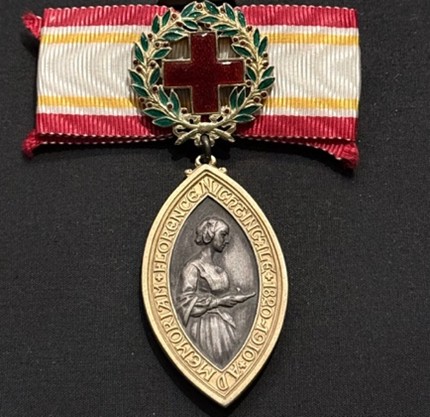
Introduction
The Florence Nightingale Medal honours the legacy of Florence Nightingale, the founder of modern nursing. This report focuses on the medal awarded particularly to Muriel Jackson, the tenth New Zealander to receive the medal for her work during World War II. Thirty-one New Zealand registered nurses have received the Florence Nightingale medal for exceptional service from 1920-2019. This item explores the medal’s history, rarity, and global significance, particularly for New Zealand – showing that the Florence Nightingale Medal is not merely a piece of wartime history but a significant contribution by women and nurses that continues to inspire healthcare today.
Florence Nightingale Medal
Established in 1912 by the 9th International Conference of the Red Cross, the Florence Nightingale Medal is the highest international distinction a nurse can receive: named after British nurse Florence Nightingale. It is awarded biennially to a maximum of fifty recipients worldwide for “exceptional courage and devotion to the wounded, sick or disabled” or “exemplary service or a creative and pioneering spirit in public health or nursing education.”
At the time when few international honours were open to women, the medal helped formally recognise their contribution during war and peacetime healthcare. By celebrating the work of nurses like Muriel Jackson, the medal was a significant milestone for women. This legacy has continued into modern health crises, such as the COVID-19 pandemic, where we can see the role of nurses remains underappreciated globally. Muriel’s award acknowledged the essential role of women in healthcare and helped pave the way for future generations of nurses.
Medal Recipients
The first New Zealander to receive the medal was Hester Maclean in 1920. During World Wars I and II, New Zealand played crucial roles, with over five hundred nurses serving overseas in hospital ships, stations, and field hospitals. The awarding of the Nightingale Medal honours these contributions and recognises those who have provided life-saving care under dangerous conditions. Today, Muriel’s medal is displayed at the Auckland War Memorial Museum, reminding visitors of her legacy and lasting impact she had on the healthcare we know now.

Who was Florence Nightingale?
Florence Nightingale (12 May 1920 – 13 August 1910), often called “the Lady with the Lamp,” was an English social reformer and the founder of modern nursing. Despite societal and family expectations, she pursued nursing after feeling a calling to serve the sick and poor. During the Crimean War, she led a team of nurses to military hospitals, improving sanitation and reducing death rates from 42% to 2% by focusing on hygiene and proper care. Her work showed the world that sanitation was key to preventing disease, and she returned to Britain as a national hero, using funds raised in her honour to establish the Nightingale Training School for Nurses, the world’s first professional nursing school. Nightingale also challenged women’s roles in society, advocating for their right to education and professional work, and remained a dedicated voice for healthcare reform throughout her life.
The medal
The medal is a vesica piscis-shaped medal composed of gold and silver gilt, within the frame is a portrait of Florence Nightingale. Around her portrait are the words “Ad memoriam Florence Nightingale 1820-1910”. On the reverse, the name of the recipient and the date awarded is engraved with an inscription “Pro vera misericordia et cara humanitate perennis décor universalis” (“true and loving humanitarianism - a lasting general propriety”) around it. Attached is a white and red ribbon, featuring a red enamel cross encircled by a green laurel crown. The red and white colouring is reminiscent of the red cross, and the yellow stripes a possible nod to the Order of Merit, which was awarded to Florence Nightingale in 1907. The medal and accompanying diploma are usually presented by the head of state (of Red Cross-National Societies FNM) at a ceremony in their own country.
Who was Muriel Jackson?
Muriel Jesse Jackson, born 11 January 1902, in Auckland, was a nurse who served in World War II. Muriel and her identical twin sister, Marini, received nursing training at Auckland Hospice before becoming a registered nurse in 1928. In 1941, they enlisted to the New Zealand Army Nursing Service, where Muriel served in Cairo before spending a year (1943 to 1944) in Cassino, Italy. Both sisters received the Royal Red Cross (RRC) for their service.
Following the war, Muriel became Supervising Tutor Sister for the Auckland Hospital Board and eventually Advisory Director at the Auckland Red Cross Centre. In this role, she played a key part in raising nursing education standards in New Zealand. On the 12th of May 1965, Muriel became the tenth New Zealand recipients of the Florence Nightingale Medal, acknowledging both her wartime contributions and her outstanding service to nursing over five decades.
Comparison for significance
Unlike the RRC, a medical award instituted by Queen Victoria in 1883 for military personnel within the Commonwealth, the Florence Nightingale Medal is an international civilian award with a humanitarian focus. It recognises beyond traditional and formal military structures. This makes it particularly significant to nurses who serve in high-risk, low-recognition environments, whether for war nurses, civilian nurses and voluntary aides. The medal validates essential contributions from both military and civilian professionals who care for others in times of crisis.
Conclusion
The Florence Nightingale Medal represents an honour for those who have served in the medical and nursing fields. It continues to hold relevance today, not only as a symbol of success, courage, and leadership in healthcare but as an inspiration for emerging generations of nurses and healthcare professionals in New Zealand and globally. Muriel Jackson’s story, along with the stories of other New Zealand recipients continues to bring pride to the profession, showcasing the impact of New Zealand’s nurses on a global stage and the essential role nurses have played in wartime and in modern crises.
In 2025, Our Health Journeys continued our partnership with Saint Kentigern College in Auckland to challenge a number of students to conduct research into an aspect of the medical history of Aotearoa New Zealand. The students, ranging from Years 8-13, produced their research in written, oral, or video format and the top projects were chosen for publication to Our Health Journeys.




